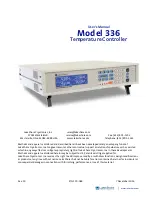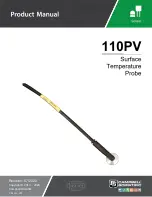
Bronkhorst
®
9.17.057
page 9
2.9 Purging
In systems for use with corrosive or reactive fluids, purging for at least 30 minutes with a dry, inert gas
(like Nitrogen or Argon) is absolutely necessary before use. After use with corrosive or reactive fluids,
complete purging is also required before exposing the system to air.
Warm-up time:
Let the instruments warm-up for at least 30 minutes for best accuracy.
During warm-up period, fluid pressure may either be on or off.
2.10 Zeroing
The zero-point of each instrument is factory adjusted. If so required the zero point may be re-
adjusted over RS232 or fieldbus or by means of using the micro switch. Procedure for zeroing by
micro switch:
♦
Warm-up, pressure up the system and fill the instrument according to the process
conditions.
♦
Make sure no flow is going through the instrument by closing valves near the instrument.
♦
The setpoint must be zero.
♦
Press micro switch and hold it. After a short time the red LED will go ON and OFF, then the
green LED will go ON. At that moment release the micro switch.
♦
The zeroing procedure will start at that moment and the green LED will blink fast. The
zeroing procedure waits for a stable signal and saves the zero. If the signal is not stable,
zeroing will take long and the nearest point to zero is accepted. The procedure will take
approx. 10 seconds.
When the indication is showing 0% signal and the green indication LED is burning continuously again,
then the zeroing action was successful.
2.11 Calibration
Each FLOW-SMS instrument is factory calibrated. Calibration certificates are included in the shipment. When operated
properly (clean gases, no pressure shocks, no vibrations, no thermal shocks, etc), regular maintenance is not required.
However, periodical inspection, recalibration or verification of the accuracy may be subject to individual requirements
of the end-user. Please refer to the internal operational requirements of your company.
2.12 Supply pressure
It is recommended to turn on power before applying pressure on the instrument and to switch off
power after removing pressure.
Turn on fluid supply gently. Avoid pressure shocks and bring the instrument gradually up to the level of
the actual operating conditions. Also switch off fluid supply gently.










































